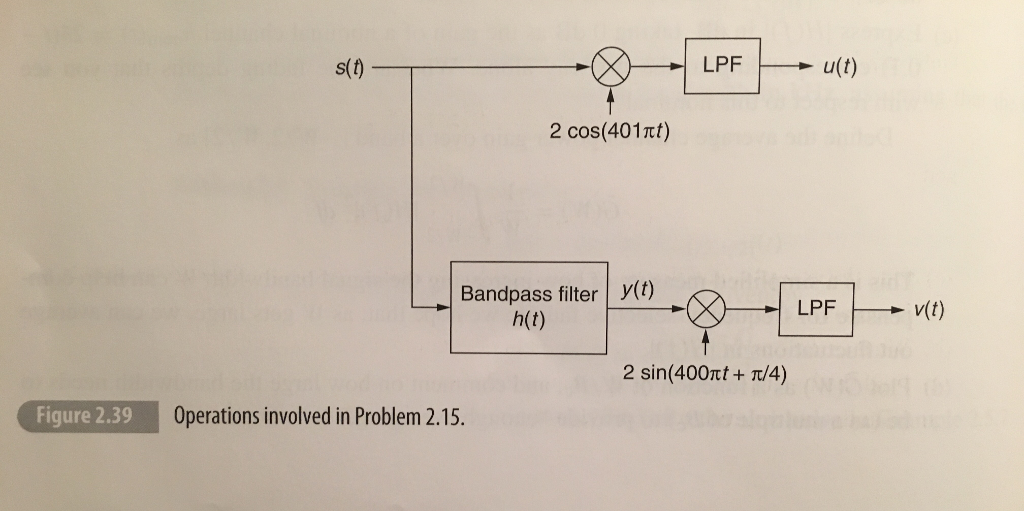Answered step by step
Verified Expert Solution
Question
1 Approved Answer
Consider the signal s(t) = I [-1,1] (t) cos(400*pi*t). a) Find and sketch the baseband signal u(t) that results when s(t) is downconverted as shown
Consider the signal s(t) = I[-1,1](t) cos(400*pi*t).
a) Find and sketch the baseband signal u(t) that results when s(t) is downconverted as shown in the upper branch of Figure 2.39.
b) The signal s(t) is passed through the bandpass filter with impulse response h(t) = I[0,1](t)sin(400*pi*t + pi/4). Find and sketch the baseband signal v(t) that results when the filter output y(t) = (s*h)(t) is downconverted as shown in the lower branch of Figure 2.39.


Step by Step Solution
There are 3 Steps involved in it
Step: 1

Get Instant Access to Expert-Tailored Solutions
See step-by-step solutions with expert insights and AI powered tools for academic success
Step: 2

Step: 3

Ace Your Homework with AI
Get the answers you need in no time with our AI-driven, step-by-step assistance
Get Started


